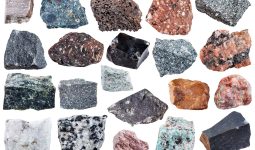Underlayment acts as the layer of protection between your roof and the shingles, helping to stabilize your roof and prevent leaks.
When choosing among the types of roofing underlayment, you’ll have plenty of options – more than 30!
Each option will have its benefits, but knowing how to distinguish between the different types of roofing underlayment can make all the difference in choosing the right one for your home.
Check out this handy guide on the different types of roofing underlayment and find out which one could be best for you!
What Is Roof Underlayment?
Roof underlayment is a material layer between the roof deck and the shingles.
Its purpose is to protect the roof deck from water damage and to provide a secondary barrier against wind-driven rain.
There are three main types of roofing underlayment: felt, fiberglass, and synthetic. Felt and fiberglass can be recycled when worn out.
Felt roofing underlayment is typically made of wool or asphalt and has an average lifespan of about 20 years.
Fiberglass roofing underlayments may last up to 50 years, but this varies depending on factors such as the type (rigid or flexible) and installation practices.
The Benefit of Roofing Underlayment
Roofing underlayment is a vital part of any roofing system. It provides a secondary layer of protection for your home if the shingles or other primary layer is damaged.
Underlayment also helps to prevent leaks by providing a barrier against water and ice.
In addition, it can help insulate your home and keep it cooler in the summer and warmer in the winter.
Several different types of roofing underlayment are available, so be sure to choose the one that best suits your needs.
Different Types of Roofing Underlayment
1. Asphalt-saturated Felt
Asphalt-saturated felt is one of the most common types of roofing underlayment. It consists of a base layer of asphalt-coated fiberglass or polyester felt saturated with asphalt.
The asphalt provides a waterproof barrier, and the fiberglass or polyester adds strength.
Some people like this roofing underlayment because it is inexpensive per square foot, but it doesn’t have as much insulating value as other options.
2. Composite Roofing
Composite roofing is another type of underlayment that includes two layers made from a mixture of asphalt and fiberglass.
One layer goes on top of the other to provide protection against wind, water, UV rays, and fire for your shingle or metal roofs.
Like some types of roofing underlayments, composite offers excellent insulation values for those in colder climates.
3. Rubberized Asphalt
Asphalt is a sticky, black, and viscous liquid or semi-solid form of petroleum. It may be found in natural deposits or a refined product.
A substance is classed as a pitch. Asphalt is used extensively in road construction, mixed with aggregate to create asphalt concrete.
It is also used for roofing, waterproofing, and insulation. A wide range of bitumen products is manufactured by heating the raw material at various temperatures, affecting viscosity and processing properties.
In this process (called cracking), volatile hydrocarbons such as propane or butane are boiled off (reducing the thickness).
Also, some long polymers that makeup asphalt become cross-linked into larger molecules to provide the desired strength.
4. Non-bitumen Synthetic
Non-bitumen synthetic roofing underlayments are a newer product on the market and offer many benefits over traditional felt paper.
They are lighter in weight, don’t absorb water, and resist mold and mildew growth. Plus, they provide excellent UV protection to help prolong the life of your shingles.
If you’re looking for high-quality roofing underlayment, non-bitumen synthetic is the way to go. They can be installed in three ways: as layers between sheets of plywood or OSB, as layers between sheets of plywood, or as layers between sheets of OSB.
Around the entire perimeter before installing a deck or as an underlayment between asphalt shingles and the underlying plywood or OSB sheathing.
The third option is not typically recommended due to the increased cost of materials, but if it’s done correctly, it provides another layer of protection from moisture penetration.
For example, while the tar side will still reach 100% saturation at 8 pounds per square foot (PSF) of loading and 25 psf of wind load per ASCE 7 requirement, a traditional bitumen roof will saturate at 12 psf when dry.
While this doesn’t sound like much, consider that most roofs have 20 psi/100 pounds per square foot (PSF) wind load requirements.
Just a 5 pounds per square foot (PSF) difference means a lot more wetting for the same load conditions!
A key benefit of using synthetic underlayment is that it doesn’t use adhesive material, so there’s no chance of glue failure.
It also has great safety features like self-extinguishing properties to reduce the risk of fire hazards.
5. Waterproof Felt Paper and Woven Fabric
Felt paper is very similar to what was used decades ago, except now it uses synthetic fibers instead of cotton fibers.
Like other roofing underlayments, it helps keep rainwater out of your home by creating a barrier between the wood sheathing below and the shingle above.
It also reduces noise transmission into the home by absorbing vibrations from walking across the top surface or moving furniture above. Lastly, woven fabric serves two purposes.
Firstly, it helps keep water out by creating a tight seal along seams. Secondly, its unique weave pattern creates air pockets that act as insulation in cold climates, keeping heat inside your home instead of outside, where ice dams can form.
How to Choose the Proper Roof Underlayment?
Underlayment is a vital part of any roofing system, and there are many different types of underlayment to choose from.
The proper underlayment will depend on the climate, the roof’s slope, and the type of shingles being used.
Here are a few things to keep in mind when choosing an underlayment:
- Climate: If you live in an area with severe weather conditions, you’ll need an underlayment that can withstand high winds and heavy rains.
- Slope: The steeper the slope, the more water will likely penetrate the shingles and reach the underlayment. A steep slope will require a more durable underlayment. Choosing the wrong underlayment for your home’s needs can lead to leaks, ice dams, or worse. To be safe, consult a professional before purchasing one.
- Some roofing underlayments include felt paper and asphalt matting, which provide reasonable protection against wind damage but not against rain penetration. Synthetic underlayments like polyurethane foam offer better protection against water penetration. Also, some chemical resistance to oil and gasoline spills while remaining flexible enough to conform to the shape of the roof.
Conclusion
The most important factor when choosing an underlayment is the climate. If you live in an area with high humidity, you’ll want to select a breathable option to prevent mold and mildew.
If you live in a cold climate, you’ll want to choose an option to prevent ice dams. Metal roofs, as do tile roofs, need a particular type of underlayment. Be sure to consult a professional before making your final decision.








